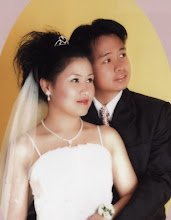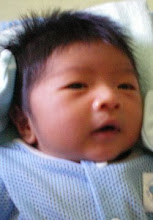Juruteknologi Makmal Perubatan / Medical Laboratory Technologist /Medical Laboratory Scientiest
Bertanggungjawab mengambil sampel dari pesakit atau binatang dan menjalankan ujian makmal bagi membantu pakar perubatan untuk urusan pendiagnosan, rawatan, pengesahan dan penyelidikan penyakit dan menyelenggara peralatan-peralatan makmal dan mengawal inventori makmal.
edisi SPA...
Medical laboratory
From Wikipedia, the free encyclopedia
Jump to: navigation, search
A medical laboratory or clinical laboratory is a laboratory where tests are done on clinical specimens in order to get information about the health of a patient. Laboratory tests are an integral part of the workup of any patient, and constitute up to 80% of a physician's diagnosis and treatment choice.
Contents[hide]
Departments
Laboratory medicine is generally divided into four sections, and each of which is further divided into a number of units. These four sections are:
Anatomic Pathology: units are included here, namely histopathology, cytopathology, and electron microscopy. Academically, each unit is studied alone in one course. Other courses pertaining to this section include anatomy, physiology, histology, pathology, and pathophysiology.
Clinical Microbiology: This is the largest section in laboratory medicine; as it encompasses five different sciences (units). These include bacteriology, virology, parasitology, immunology, and mycology.
Clinical Biochemistry: Units under this busy section are instrumental analysis, enzymology, toxicology and endocrinology.
Haematology: This small, yet busy, section consists of two units, which are coagulation and blood bank.
Genetics is also studied along with a subspecialty known as cytogenetics.
Distribution of clinical laboratories in health institutions varies greatly from one place to another. Take for example microbiology, some health facilities have a single laboratory for microbiology, while others have a separate lab for each unit, with nothing called a "microbiology" lab.
Here's a detailed breakdown of the responsibilities of each unit:
Microbiology receives almost any clinical specimen, including swabs, feces, urine, blood, sputum, cerebrospinal fluid, synovial fluid, as well as possible infected tissue. The work here is mainly concerned with cultures, to look for suspected pathogens which, if found, are further identified based on biochemical tests. Also, sensitivity testing is carried out to determine whether the pathogen is sensitive or resistant to a suggested medicine. Results are reported with the identified organism(s) and the type and amount of drug(s) that should be prescribed for the patient.
Parasitology is a microbiology unit that investigates parasites. The most frequently encountered specimen here is faeces. However, blood, urine, sputum, and other samples may also contain parasites.
Virology is concerned with identification of viruses in specimens such as blood, urine, and cerebrospinal fluid.
Haematology works with whole blood to do full blood counts, and blood films.
Coagulation requires citrated blood samples to analyze clotting times and coagulation factors.
Clinical Biochemistry usually receives serum. They test the serum for chemicals present in blood. These include a wide array of substances, such as lipids, blood sugar, enzymes, and hormones.
Toxicology mainly tests for pharmaceutical and recreational drugs. Urine and blood samples are submitted to this lab.
Immunology/Serology uses the concept of antigen-antibody interaction as a diagnostic tool. Compatibility of transplanted organs is also determined.
Immunohaematology, or Blood bank determines blood groups, and performs compatibility testing on blood donors and recipients. It also prepares blood components, derivatives, and products for transfusion.
Urinalysis tests urine for many analytes. Some health care providers have a urinalysis laboratory, while others don't. Instead, each component of the urinalysis is performed at the corresponding unit. If measuring urine chemicals is required, the specimen is processed in the clinical biochemistry lab, but if cell studies are indicated, the specimen should be submitted to the cytopathology lab, and so on.
Histopathology processes solid tissue removed from the body (biopsies) for evaluation at the microscopic level.
Cytopathology examines smears of cells from all over the body (such as from the cervix) for evidence of inflammation, cancer, and other conditions.
Genetics mainly performs DNA analysis.
Cytogenetics involves using blood and other cells to get a karyotype. This can be helpful in prenatal diagnosis (e.g. Down's syndrome) as well as in cancer (some cancers have abnormal chromosomes).
Surgical pathology examines organs, limbs, tumors, fetuses, and other tissues biopsied in surgery such as breast masectomys.
Medical laboratory staff
The following is the hierarchy of the clinical laboratory staff from highest authority to lowest: pathologist, pathologist assistant, laboratory manager, department supervisor, chief technologist (lead technologist), cytotechnologist, medical technologist, histotechnologist, medical laboratory technician, medical laboratory assistant (lab aide), phlebotomist, transcriptionist, and specimen processor (secretary).
Types of laboratory
In many countries, there are two main types of labs that process the majority of medical specimens. Hospital laboratories are attached to a hospital, and perform tests on patients. Private (or community) laboratories receive samples from general practitioners, insurance companies, and other health clinics for analysis. These can also be called reference laboratories where more unusual and obscure tests are performed.
For extremely specialised tests, samples may go to a research laboratory.
A lot of samples are sent between different labs for uncommon tests. It is more cost effective if a particular laboratory specializes in a rare test, receiving specimens (and money) from other labs, while sending away tests it cannot do.
Specimen processing and work flow
Sample processing will usually start with a set of samples and a request form.
Typically a set of vacutainer tubes containing blood, or any other specimen will arrive to the laboratory in a small plastic bag, along with the form.
The form and the specimens are given a laboratory number. The specimens will usually all receive the same number, often as a sticker that can be placed on the tubes and form. This label has a barcode that can be wanded by automated analyzers and test requests uploaded from the LIS. Entry of requests onto a laboratory management system involves typing, or scanning (where barcodes are used) in the laboratory number, and entering the patient identification, as well as any tests requested. This allows laboratory machines, computers and staff to know what tests are pending, and also gives a place (such as a hospital department, doctor or other customer) for results to go.
For biochemistry samples, blood is usually centrifuged and serum is separated. If the serum needs to go on more than one machine, it can be divided into separate tubes.
Many specimens end up in one or more sophisticated automated analyser, that process a fraction of the sample and return one or more "results". Some laboratories use robotic sample handlers (Laboratory automation) to optimize the workflow and reduce contamination risk and sample handling of the staff.
The work flow in a lab usually is heavy from midnite to 7:00 am. Nurses and doctors generally have their patients tested at least once a day with general complete blood counts and chemistry profiles. These orders are then drawn during a morning run by phlebtomists. This way the med techs can test the specimens and have the results in the patient's charts for the doctors to consult during their morning rounds. Another busy time for the lab is after 3:00 pm when private practice physician offices are closing. Couriers will pick up specimens that have been drawn throughout the day and deliver them to the lab. Also, couriers will stop at outpatient drawing centers and pick up specimens.
sedikit sebanyak tentang kerja saya
Wednesday, August 6, 2008
Subscribe to:
Post Comments (Atom)






No comments:
Post a Comment